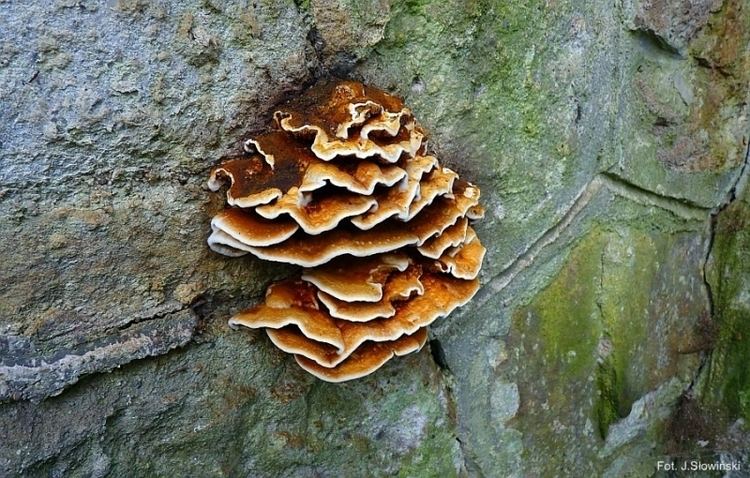Kingdom Fungi | Division Basidiomycota Scientific name Serpula lacrymans Rank Species | |
 | ||
Similar Serpula, Coniophora puteana, Hylotrupes, Common furniture beetle, Coniophora | ||
Serpula lacrymans
Serpula lacrymans is one of the fungi that causes damage to timber referred to as dry rot. It is a basidiomycete in the order Boletales.
Contents

Taxonomy

The species was first described under the name Boletus lacrymans by Franz Xavier von Wulfen in 1781. It was transferred to the genus Serpula by Petter Karsten in 1884.

The specific epithet is derived from the Latin words serpula for "creeping" (as in a serpent) and lacrymans, meaning "making tears".
Environment

Serpula lacrymans has a preference for temperatures of 21 to 22 °C (70 to 72 °F) but can survive any temperature from 3 to 26 °C (37 to 79 °F). It is not clear how much light is needed to promote Serpula lacrymans growth. In terms of aeration Serpula lacrymans often grows near ventilation shafts which shows a preference for concentrated oxygen. A moisture content of 30 to 40 percent is its ideal level in wood to promote fruit body formation. It appears that Serpula lacrymans requires an environment where both inorganic and organic materials are present. The fungus uses calcium and iron ions extracted from plaster, brick, and stone to aid the breakdown of wood, which results in brown rot.
Distribution
Although it is a common indoor biodeterioration agent, it has only been found in a few natural environments, the Himalayas, Northern California, the Czech Republic and east Asia. A recent study on the evolutionary origin and spread of this species using genetic markers (amplified fragment length polymorphisms, DNA sequences and microsatellites) on a worldwide sample of specimens suggested the existence of two main lineages, a nonaggressive lineage found in North America, and an aggressive lineage found on all continents, both in natural environments and buildings.
Impact on structures
Serpula lacrymans is considered to be the most damaging destroyer of indoor wood construction materials in temperate regions.
"In the United Kingdom alone, money spent by building owners rectifying damage caused by dry rot was at least 150 million pounds per annum."
